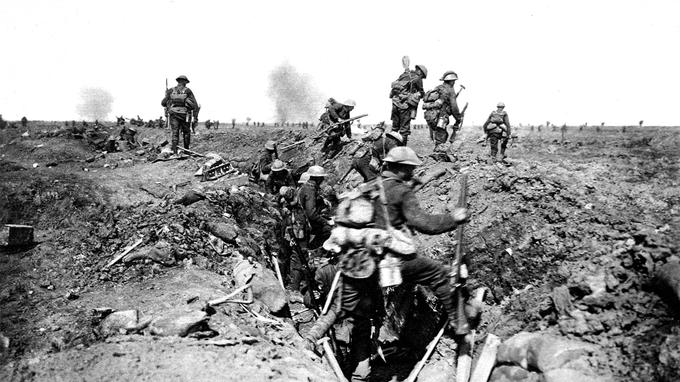


The assault was originally planned as a joint French–British offensive which was part of a wider strategy of attacking Germany simultaneously on the Western and Eastern Fronts, with the aim of destroying Germany’s reserves of manpower. The offensive was eventually abandoned on 18 November with staggering troop losses and little ground gained.
#THE BATTLES OF VERDUN AND THE SOMME SERIES#
Today marks the 105th anniversary of the start of the Somme offensive, a series of fierce and ultimately futile battles that consumed the British, Australian and Dominion forces for much of 1916. Within 24 hours, the British army would suffer almost 60,000 casualties, a third of whom were killed, and record the most costly day in its history. On November 18, 1916, Haig called off the battle declaring his official departure from the front.In the early morning of 1 July 1916, more than 100,000 British infantrymen were ordered from their trenches in the fields and woods north of the Somme River in France, to attack the opposing German line. Due to technical issues and mishandling of the tanks by the inexperienced soldiers, a few tanks managed to penetrate to the German lines, further weakening the resistance to the point of surrender. Due to the heavy rains, the horses were bogged in the mud and only a few soldiers survived after the Germans opened a fire.īy mid-September, pressure had built up among the Germans after the introduction of the tanks by Haig. Haig, who believed in attrition, pursued the battle further by sending in the cavalry on the Western Front. Since the British used minimal attacks on the first day, 57,000 men fell, of which 19,420 died. Upon realizing the infantry attack, the German soldiers shifted to deeper hideouts manning their machine guns ready to face the British and French Armies. The battle commenced with a weeklong weaponry attack of the German lines in the North with the aim of cutting all their wires, destroying the trenches, and knocking out the enemy guns thus providing a useful barrage for the infantry attack. At the end of the meeting, Douglas Haig and Henry Rawlinson commenced campaigns through the Kitchener’s Volunteer Army with posters of Lord Kitchener himself persuading the people to volunteer in the battle as a sign of patriotism. In 1915, allied commanders from the British and French armies met to discuss the strategies for the following year’s offensive astride at Verdun. Seeing their dissatisfaction and frustration, the British decided to move in and aid the French. Lead Up to the Battle of Sommeįor a couple of months, the French had been suffering devastating losses at the Verdun battlefield, east of Paris. At the culmination of the battle, the British Army grieved 420,000 casualties, the French lost 200,000 men, and the Germans had 500,000 casualties. The Somme Offensive, which was the largest battle of the First World War, commenced on July 1, 1916, and was fought through to November 18, 1916. It was a deliberate dual operation between the French and British to achieve a conclusive victory over the Germans on the Western Front after months of trench deadlock. The Battle of the Somme is documented as one of the bloodiest battles that occurred during the First World War.


 0 kommentar(er)
0 kommentar(er)
